ball lightning page
WARNING: big caps (>50J) are absolutely
deadly!
Defibrillators have approx. 500J, we are dealing
with energies an order of two magnitudes higher (up to 50kJ)
here!
50kJ equals dropping a VW Golf (a german car with 1400kg) from 3.5m, better
not to stand under the weight!
|
||||||||
In spring 2006 I noticed that the Max Planck Intitute for Plasmaphysics
in Berlin conducts some very interesting experiments:
german press information:
http://www.ipp.mpg.de/ippcms/de/presse/pi/05_06_pi.html
english press information:
http://www.ipp.mpg.de/ippcms/eng/presse/pi/05_06_pi.html
Though I overloocked that the Russians performed them much earlier (from
2002 on):
"High voltage erosional water discharge" type of ball lightning:
http://www.balllightning.narod.ru/hvewd.html
<---- this is the link you want to click on!
(Russion scientific paper:
http://balllightning.narod.ru/2003/Gatchina/Stepanov03-1/Stepanov03.htm)
On the same website there is also a lot information on other ways to produce
"ball lightning":
http://www.balllightning.narod.ru/
At the open house in Garching (Technical University of Munich), Prof. Jüttner and Prof. Fussman peformed their experiment nearly every 5 minutes the whole day long at the munich branch of the Max Planck Intitute for Plasmaphysics (MPP).
Prof. Fussmann at the beginning of the day (left) and Prof. Jüttner
at the end of a hard day (right):
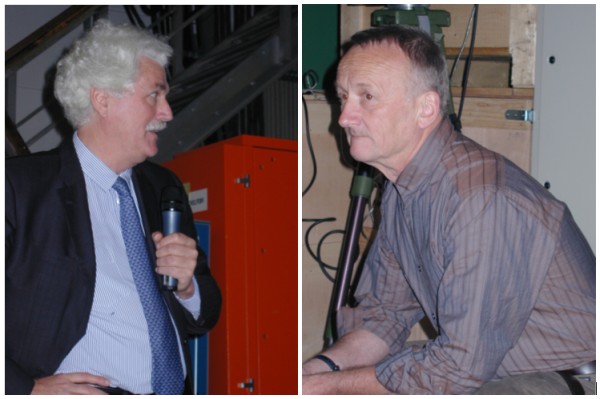
Here is sequence of ball lightning I captured as a videoclip:
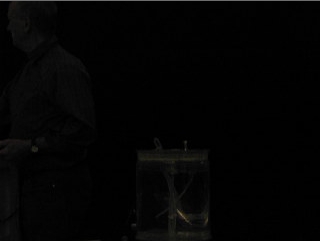 |
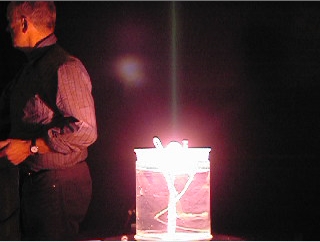 |
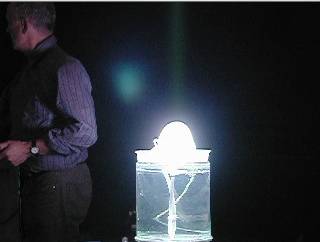 |
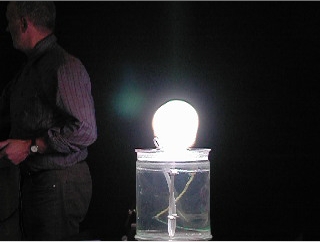 |
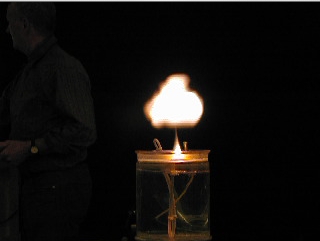 |
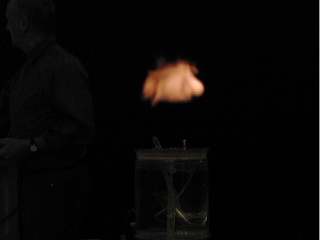 |
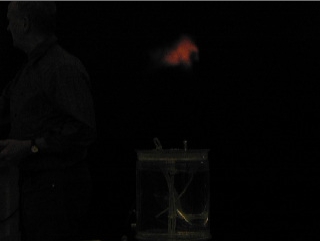 |
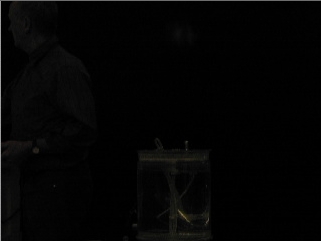 |
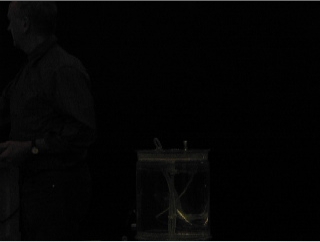 |
I did not capture the waveform of the current for this particular ball lightning. But the camera I used for the clip captured 15 frames per second, so the total duration of the ball lightning might be somewhere around half a second.
Here are two other waveforms I captured after the shot:
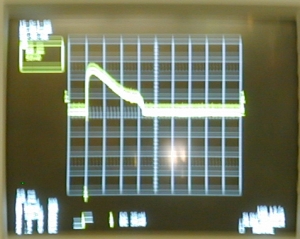
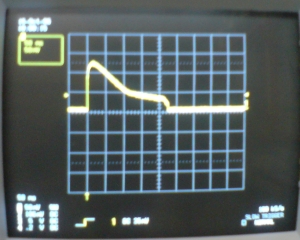
The peak currrent was 25A, duration 175ms and 220ms (sorry for the shaky
images, it was very dark in the hall at the institute on that day).
I'm not sure if they opened the contacts before the
discharge was finished because Prof. Jüttner said one time during the
many discussions we had on that day that they switched the current of in
another demonstration in Berlin to make clear that the lighting effect still
persists a long time after stopping the energy input (exponential decay of
capacitor discharge would take longer).
Here is a schematic of the setup they used:
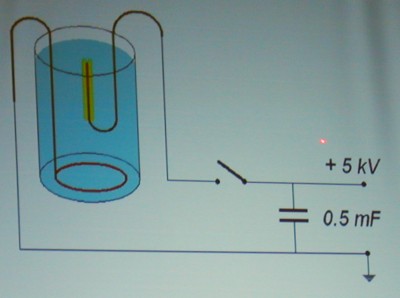
Please note that the capacitor was doubled up to 1000uF on that day. The
water was pure tap water without any additional salt. Salt will add some
color but will also enhance the speed of the discharge (decreased resistance
in the RC discharge circuit). By adding to much salt, you will end up with
an explosion (ruptured water bowl) instead of a ball lightning...
BIG pulse caps easily delivered the 25A peak current ;-)
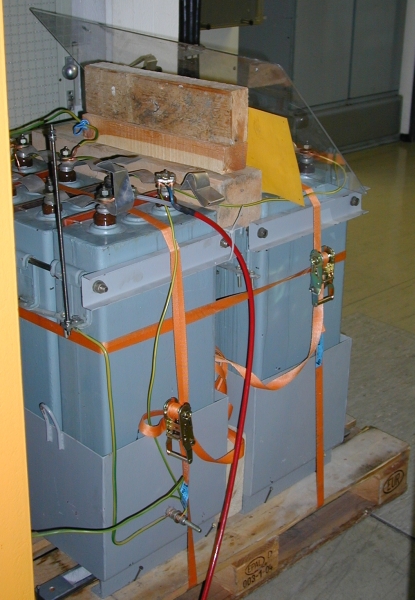
Charging voltage was 4.7kV, residual voltage after the shot 2.7kV to 3.1kV.
The switching was done with a big contactor, I'm not
sure if they opened the contacts before the discharge was finished (see captured
current waveforms above)!
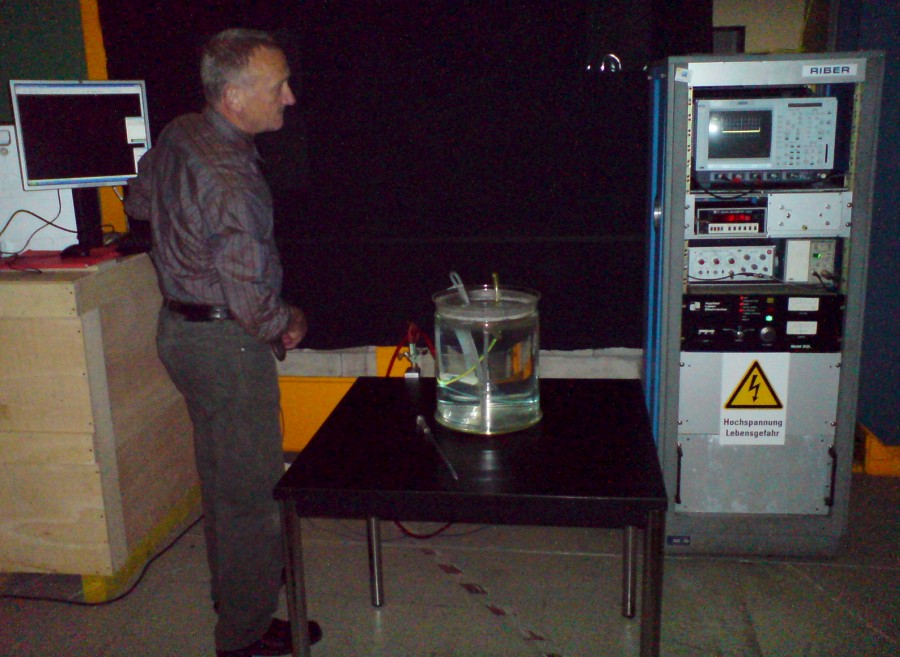
The center electrode was just a bare cable sticking 2mm above water level:
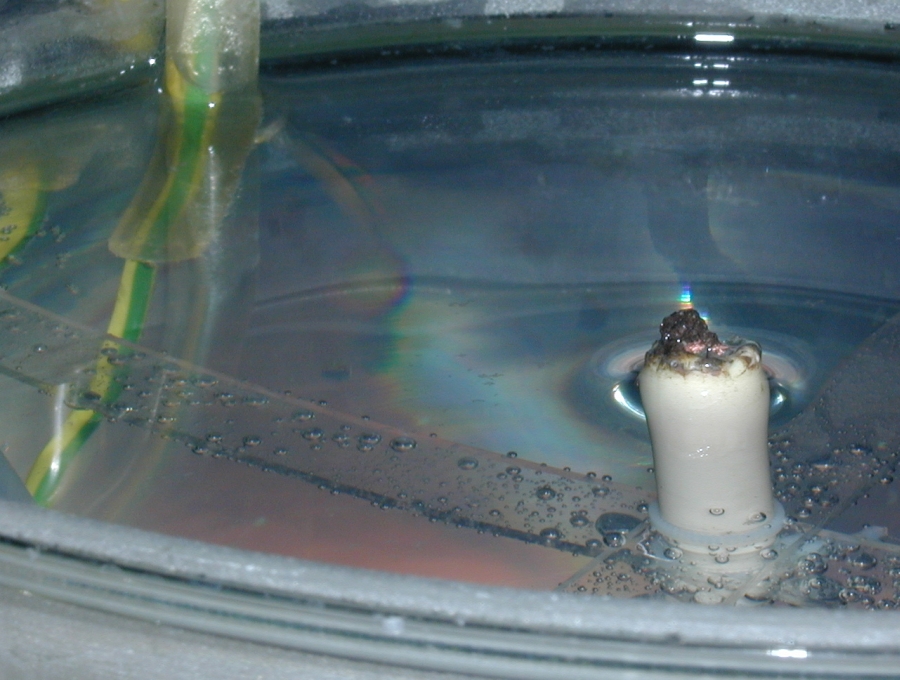
I screencaptured a slow motion video they took live at this day (click it
left for playing or right for downloading):
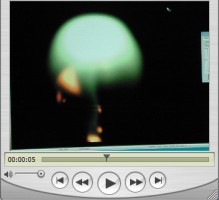
Things to do:
Messung des Spannungs- und
Stromverlaufes (Speicheroszi!)
Filmchen mittels OlyC2020: 320x240@15fps (1/30s) bzw. 160x120@60fps (1/120s???) also 4x soviel Bildern (ca. 25 Einzelbilder dann vom BL-Ereignis, aber eben nur stark reduzierte Auflösung!)
Filmchen mittels K800i: Auflösung? fps? Belichtungszeit pro Frame?
"Ball lightning" in the microwave:
Well, actually I don't want to call it "ball lightning" since it requires a permanent input of energy to keep the plasma ball alive. Therefore the description "little plasma balls in the micro wave" is much better.
What you need is a microwave, an old glass (might shatter due to the uneven heat distribution!), the lead of a pencil and a piece of metal.
The frequency of the micro wave is 2.45GHz, therefore the wavelength is somewhere around 12.2cm. From the metal you build a ground plane at least a half wavelength in diameter. Next stick a piece of the lead in the middle of the groundplane. It should be a quarter wavelength long (3cm). Put the glass over it (else the plasma ball will brn the laquer on the top of the microwave!) and find a place where the field strength is maximum (there is a strange pattern of standing waves inside the cavity), that means the turntable should be deactivated.
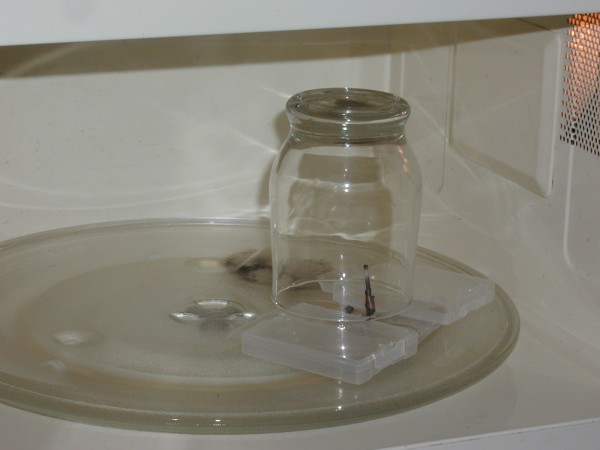
If it is at the right place and you'll switch it on, a plasma ball wil appear
after 15s or so at the top of the lead:
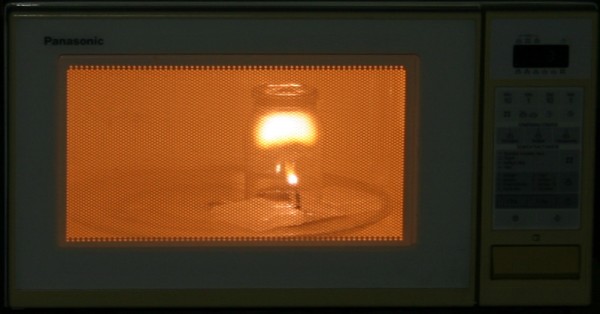
Sometimes it will separate completely from the lead and float around at the
top of the glass:
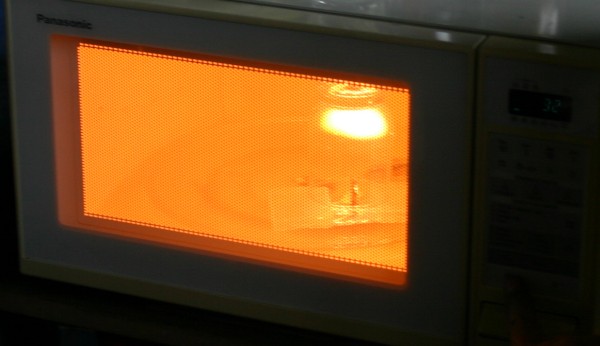
Here are two short video clips: Video A, Video B
http://www.newscientist.com/channel/fundamentals/mg19325863.500-lightning-balls-created-in-the-lab.html
Update July 2009: I created my own ball lightning (water bucket style
like the guys from the MPP did) on the Teslathon 2009 (Zollernalb Sternwarte)
with my 75uF@8kV-capacitorbank (in total 2.5kJ MP-caps). Images will follow
soon here. ![]()
